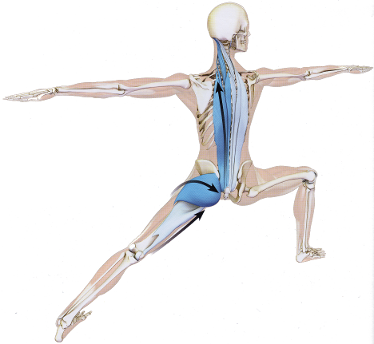Books for Yoga Anatomy
 Copyright 2010 Raymond Long
Copyright 2010 Raymond Long
When I started doing yoga, it looked simple. Twist yourself into a little pretzel, sit there for a little while, then choose a different pretzel shape and repeat. It turns out that things aren’t quite so simple. You have to engage muscles to remain in these twisty positions and even to pull yourself further into the postures.
Knowing which muscles to engage and where to focus your attention in each posture is something that a good teacher would help with, of course, but I’m a bit teacherless. There is some advice available online, much of it expressed in terms of analogies (“embrace your thigh”, and so on). That’s OK, but it’s not a substitute for a precise anatomical description of what’s going on.
Raymond Long’s two series of books, “Scientific Keys” and “The Mat Companion”, both available from his Bandha Yoga site, are an amazing and unique resource to help with this. There are two “Scientific Keys” books and four “Mat Companion” books, all of which are full of high quality anatomical illustrations and detailed descriptions of how to make a whole range of yoga postures work. Some of the descriptions are at the level of “engage the lower third of the trapezius here”, but there are also a lot of very simple and clear cues for engaging and getting to know about muscles that you might not otherwise think about.
There are four or five cues for each posture, plus a lot of general advice about flexibility and joint health. I’ve not seen anything else anything like Long’s books out there, and I’d really recommend them to anyone who’s either studying yoga on their own, or who just wants to improve their practise.